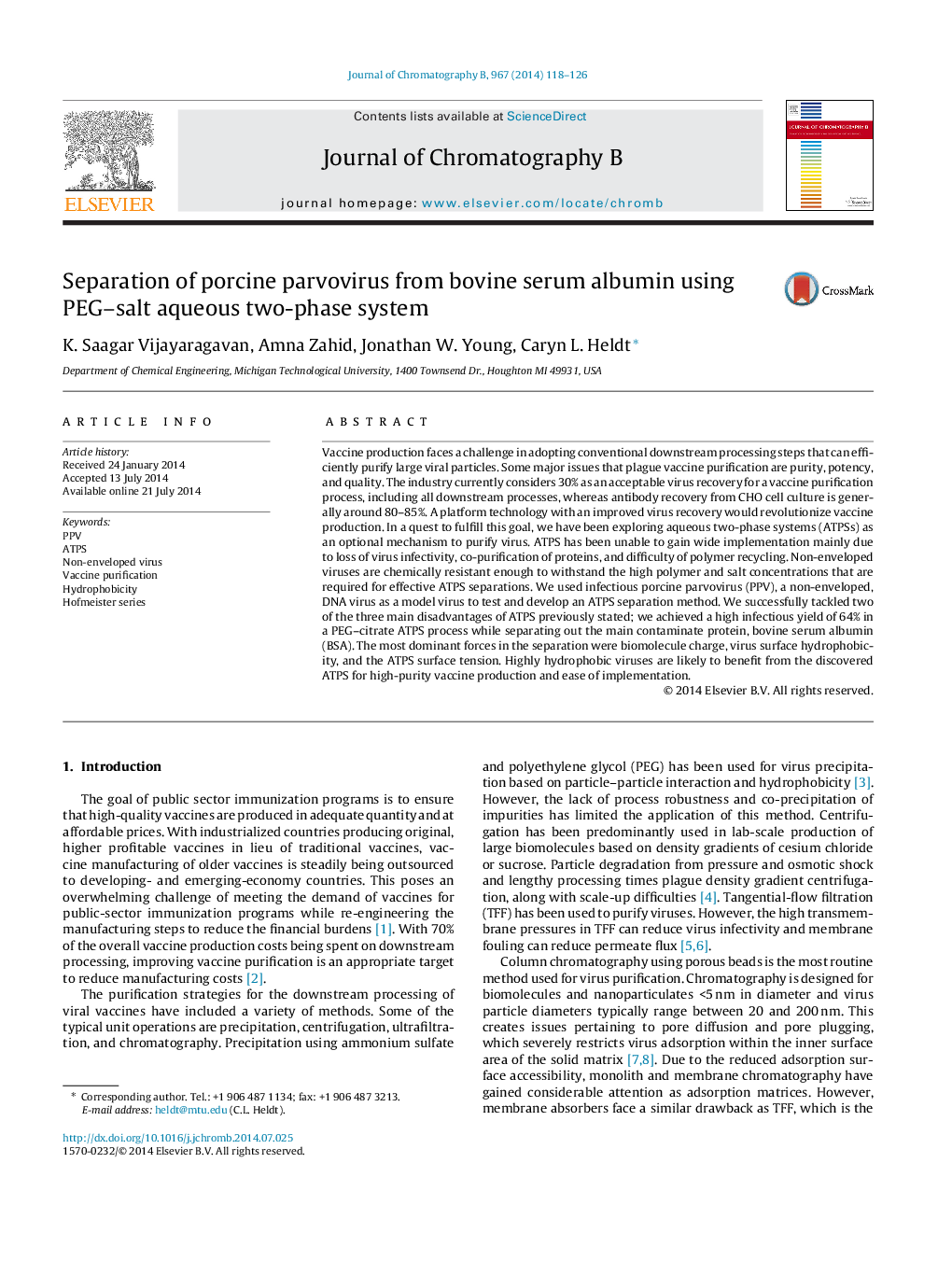| کد مقاله | کد نشریه | سال انتشار | مقاله انگلیسی | نسخه تمام متن |
|---|---|---|---|---|
| 1215738 | 1494076 | 2014 | 9 صفحه PDF | دانلود رایگان |
• At 15 w/w% PEG 12 K and 14 w/w% citrate at pH 8, a recovery of 64% was obtained.
• A PEG–citrate ATPS has been investigated to recover the non-enveloped virus, PPV.
• The main contaminant, BSA, was removed from the virus-containing solution.
• Recovery was dominated by virus charge, hydrophobicity, and ATPS surface tension.
Vaccine production faces a challenge in adopting conventional downstream processing steps that can efficiently purify large viral particles. Some major issues that plague vaccine purification are purity, potency, and quality. The industry currently considers 30% as an acceptable virus recovery for a vaccine purification process, including all downstream processes, whereas antibody recovery from CHO cell culture is generally around 80–85%. A platform technology with an improved virus recovery would revolutionize vaccine production. In a quest to fulfill this goal, we have been exploring aqueous two-phase systems (ATPSs) as an optional mechanism to purify virus. ATPS has been unable to gain wide implementation mainly due to loss of virus infectivity, co-purification of proteins, and difficulty of polymer recycling. Non-enveloped viruses are chemically resistant enough to withstand the high polymer and salt concentrations that are required for effective ATPS separations. We used infectious porcine parvovirus (PPV), a non-enveloped, DNA virus as a model virus to test and develop an ATPS separation method. We successfully tackled two of the three main disadvantages of ATPS previously stated; we achieved a high infectious yield of 64% in a PEG–citrate ATPS process while separating out the main contaminate protein, bovine serum albumin (BSA). The most dominant forces in the separation were biomolecule charge, virus surface hydrophobicity, and the ATPS surface tension. Highly hydrophobic viruses are likely to benefit from the discovered ATPS for high-purity vaccine production and ease of implementation.
Figure optionsDownload as PowerPoint slide
Journal: Journal of Chromatography B - Volume 967, 15 September 2014, Pages 118–126
